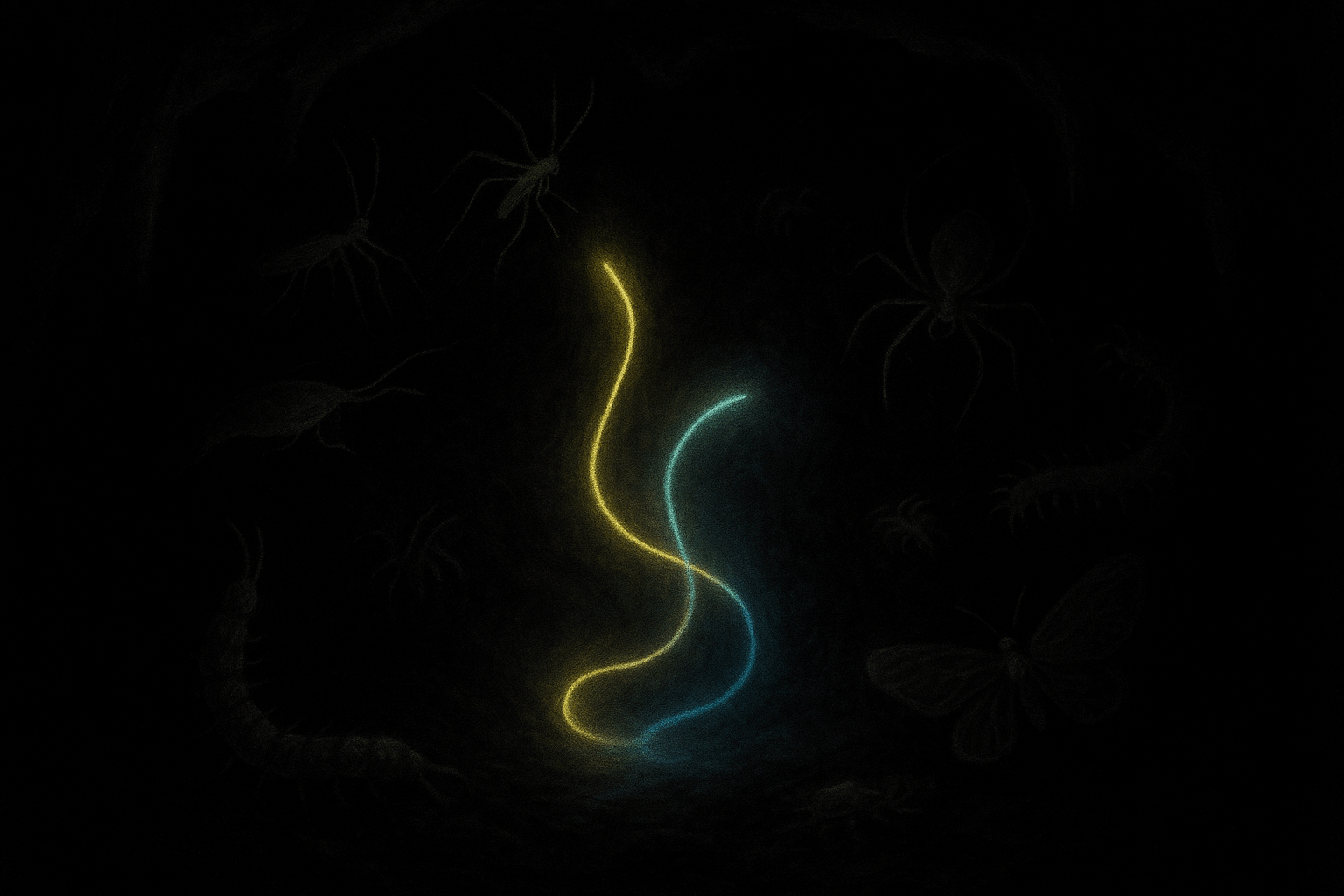A Fortuitous Discovery on the Black Sea Coast
The story of Movile Cave’s discovery is a classic tale of human geography intersecting with deep geological time. In 1986, Romanian workers were surveying the ground near Mangalia, a city on the Black Sea coast. Their goal was mundane: to find a suitable location for a new power plant. As they drilled into the limestone bedrock of the Dobrogea region, they accidentally punctured the roof of a hidden world.
The first person to truly understand the significance of this discovery was speleologist Cristian Lascu. Lowered down a narrow, 20-meter shaft, he found himself in an environment unlike any other. The air was thick, heavy with the smell of sulfur, and dangerously low in oxygen. What he and subsequent teams of scientists uncovered was a pristine ecosystem, perfectly sealed off from the surface for an estimated 5.5 million years, preserved like a prehistoric time capsule.
The Alien Geography of Movile Cave
To enter Movile Cave is to travel to another planet. The physical geography of this subterranean world is defined by its isolation and its unique atmospheric and hydrological systems. The cave consists of two main levels:
- The Upper Level: This section is dry, composed of a series of narrow, clay-coated limestone passages. The air here is the first sign that you’re no longer in the familiar world.
- The Lower Level: This level is partially flooded with geothermally warmed, sulfur-rich water, forming a subterranean lake. This water is the lifeblood of the entire ecosystem.
The most defining feature of Movile’s geography is its atmosphere. It is profoundly different from the air we breathe on the surface. Analysis of the cave’s air reveals:
- Low Oxygen: Only 7-10% in some chambers, compared to the 21% we are accustomed to.
- High Carbon Dioxide: Anywhere from 1.5% to 3.5%—up to 100 times the surface concentration.
- High Hydrogen Sulfide and Methane: The water and air are saturated with hydrogen sulfide (the source of the rotten-egg smell) and methane, which are toxic to most surface life.
This bizarre and hostile mixture is a direct result of the cave’s geology. It’s a self-contained system, where gases seep up from deep within the Earth through geological faults, feeding the ecosystem from below rather than from above.
Life Without Light: The Miracle of Chemosynthesis
On the surface, nearly all life depends on photosynthesis—the process where plants use sunlight to convert carbon dioxide into energy, forming the base of the food web. In the absolute darkness of Movile Cave, photosynthesis is impossible. Instead, life is built upon a different foundation: chemosynthesis.
Chemosynthesis is a process where microorganisms use chemical energy, rather than light energy, to produce food. In Movile, bacteria and other microbes are the primary producers. They float on the surface of the subterranean lake in thick, slimy, off-white films known as “microbial mats.” These microbes harness the energy released by oxidizing the abundant hydrogen sulfide and methane in the water. In essence, they “eat” the toxic gases.
These microbial mats are the grasslands and forests of Movile Cave. They are the base of the entire food chain, providing nourishment for the strange creatures that have evolved to graze on them, which in turn are eaten by the cave’s predators.
The Troglobites: A Bestiary of the Dark
Over millions of years of isolation, the animals within Movile Cave have adapted in extraordinary ways, becoming what are known as troglobites—creatures that live their entire lives in the dark. Of the 51 invertebrate species identified in the cave so far, 34 are endemic, meaning they are found nowhere else on Earth.
These inhabitants share common adaptations to their lightless world:
- They have no eyes, as vision is useless in total darkness.
- They lack skin pigmentation, often appearing ghostly white or translucent.
- They have developed extremely long antennae and legs, which they use to feel their way around and detect vibrations from prey or predators.
Some of the cave’s most fascinating residents include the eyeless water scorpion (Nepa anophthalma), a unique predator that stalks the edges of the lake; a special species of leech that is the top aquatic predator; and the “king of the cave”, a venomous centipede named Cryptops speleorex. The cave is also home to ghostly spiders, pseudoscorpions, woodlice, and snails, all perfectly adapted to survive on the bounty provided by the chemosynthetic bacteria.
A Window into Extraterrestrial Life?
Beyond its bizarre biology, Movile Cave serves an even greater scientific purpose: it’s a terrestrial analog for what life might look like on other worlds. For decades, astrobiologists have theorized that life could exist in environments without sunlight, powered by geothermal and chemical energy.
Movile Cave is the proof of concept. It demonstrates that a complex, multi-tiered ecosystem can be sustained entirely by chemosynthesis in a dark, toxic environment. This has profound implications for the search for life beyond Earth. If life can thrive in a sealed-off Romanian cave, why not in similar environments elsewhere in our solar system?
- Could life exist in the subsurface oceans of Jupiter’s moon Europa or Saturn’s moon Enceladus, warmed by tidal forces and fed by hydrothermal vents?
- Could microbes be surviving beneath the surface of Mars, sheltered from radiation and tapping into subterranean water and minerals?
Movile Cave tells us that the answer is a resounding “maybe.” It forces us to broaden our definition of a “habitable zone” and to consider that life might be hiding in places we once thought utterly inhospitable.
This incredible Romanian cave is more than just a geographical oddity. It is a natural laboratory, a message from our own planet’s hidden past, and a beacon of hope in our search for life in the cosmos. It reminds us that even after centuries of exploration, Earth still holds alien worlds right under our feet, waiting to be discovered.
